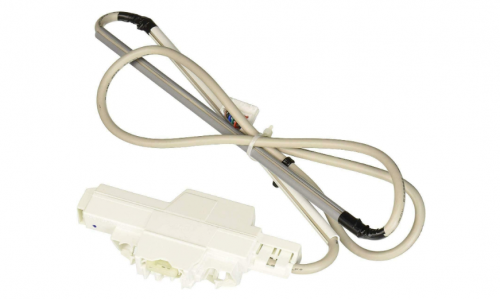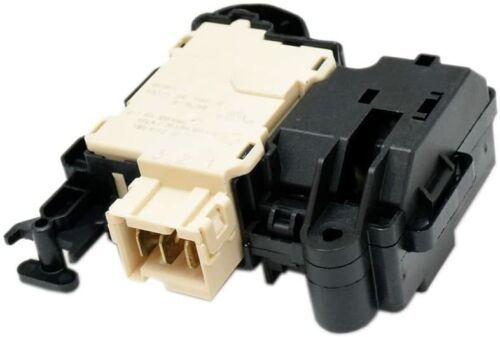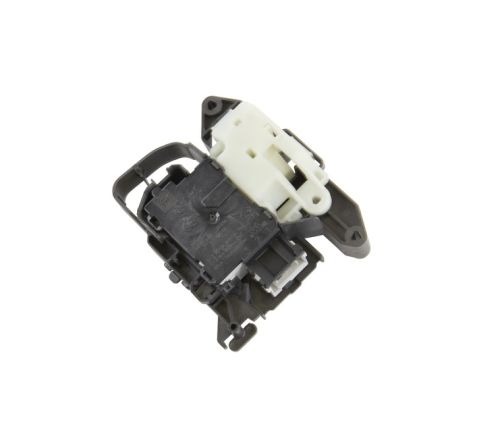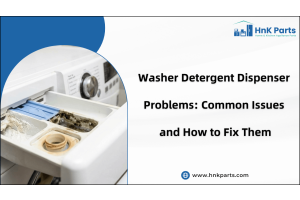
Laundry Essentials: 7 Expert Tips for Effective Clothes Washing
Laundry is a task that appears deceptively simple yet holds within it a myriad of trials and tribulations that can baffle even the most seasoned homemaker. Laundry is an essential part of our daily lives, and by employing some simple yet effective tips and tricks, we can ensure our clothes are cleaned thoroughly and maintain their quality for longer. Whether you're a busy professional, a student, or a homemaker, understanding the significance of maintaining clean and fresh clothing is essential. Effective clothes washing can also reduce your energy consumption and also the usage of water. Know about your laundry system and how to use it perfectly and efficiently before using it.
Here in this article we will see some of the laundry tips and tricks to enhance your laundry experience. Follow our simple tips to improve your laundry routines and to achieve cleaner clothes.
How to Do Laundry: Tips and Tricks
Follow our top 7 expert laundry tips and tricks to wash and maintain your laundry:
Tip 1: Sorting Clothes Properly
Sorting clothes properly during laundry is essential to ensure that each garment receives the appropriate care and washing conditions. Following the correct sorting methods will not only prevent damage to your clothes but also help maintain their color, texture, and overall quality.
Follow these instructions to sort your clothes properly:
- Check the care labels: Before starting the sorting process, always examine the care labels on each garment. The labels provide essential information about the fabric and washing instructions.
- Sort by color: The most common and fundamental way to sort clothes is by color. Separate light-colored clothing from dark-colored ones. Washing light and dark clothes together can lead to color bleeding, where the dye from one garment transfers to another, causing stains and discoloration.
- Sort by fabric type: Different fabrics require different washing methods. Sort clothes based on their fabric type, such as cotton, linen, synthetics, delicate fabrics, and so on. Washing clothes with similar fabric types together will prevent damage and pilling.
- Empty pockets and zip up zippers: Before placing clothes in the washing machine, empty all pockets to avoid potential damage to both the clothes and the washing machine. Zip up zippers to prevent them from snagging other garments.
- Don't overload the machine: Avoid overloading, Clothes need space to move around freely in the water for effective washing.
By following these steps and taking the time to sort your clothes properly before starting the laundry, you can ensure that each garment receives the care it needs, helping your clothes last longer and look better.
Tip 2: Selecting the Right Detergent
Selecting the right detergent is crucial for achieving clean and fresh laundry while also preserving the quality of your clothes.
Select your detergent based on the following considerations:
- Read the labels: Pay attention to the care labels on your clothing, as they often provide guidance on the type of detergent suitable for the fabric.
Consider detergent types: - Regular detergent: This type of detergent is suitable for most everyday laundry needs and works well with most fabrics and water conditions.
- High-efficiency (HE) detergent: If you have a high-efficiency washing machine, it's essential to use HE detergent, as it produces fewer suds, which is necessary for efficient washing in these machines.
- Liquid vs. powder: Both liquid and powder detergents are effective, but some people find that liquid detergents dissolve more easily, especially in cold water.
- Consider water hardness: If you have hard water (water with a high mineral content), regular detergents may not work as effectively. In such cases, opt for a detergent specifically formulated for hard water or consider using a water softener along with your regular detergent.
- Follow dosing instructions: Always use the recommended amount of detergent based on your laundry load size and the product's instructions.
- Avoid mixing detergents: Stick to one type of detergent for a particular load. Mixing different detergents may not produce the desired cleaning results and could lead to unpredictable interactions.
Tip 3: Mastering Washing Machine Settings
Identifying washing machine settings is essential for getting the best results during laundry and ensuring that your clothes are cleaned effectively without causing damage. Read the manual to Familiarize yourself with your washing machine's user manual. Different models have varying settings and features, so understanding your specific machine is crucial. By using appropriate settings you can ensure following benefits:
- Maintenance and cleaning: Regularly clean your washing machine to prevent mold, mildew, and unpleasant odors. Follow the manufacturer's instructions for cleaning the drum, detergent dispenser, and filters.
- Energy-saving: To save energy and water, consider using the cold wash setting whenever possible and run full loads rather than small ones.
- Effective Cleaning: Different fabrics and laundry items have varying care requirements. Understanding the various settings allows you to select the appropriate wash cycle for specific fabrics, ensuring effective cleaning without causing damage or premature wear to your clothes.
- Preventing Damage: Using incorrect settings or overloading the washing machine can lead to mechanical issues and damage to the machine itself. Knowing the load capacity and following the recommended settings help extend the life of your washing machine.
Read about the 10 Most common washing machine and problems.
Tip 4: Treating Stains Effectively
Treating stains effectively in laundry is essential to ensure that your clothes remain clean, fresh, and in good condition.
Here are the steps to treat stains effectively in laundry:
- Act Quickly: As soon as you notice a stain, try to treat it before it sets into the fabric.
- Identify the Stain: Determine the type of stain you're dealing with. Common stains include food stains, grease or oil stains, ink stains, grass stains, blood stains, and more. Different stains may require different treatments.
- Blot, Don't Rub: If the stain is wet or fresh, use a clean cloth or paper towel to blot the excess liquid gently. Avoid rubbing the stain, as it can spread the stain and push it deeper into the fabric.
- Pre-Treat the Stain: Before washing the garment, apply a stain remover or a small amount of liquid detergent directly to the stain. Gently rub the stain treatment into the fabric with your fingers or a soft brush. Allow it to sit for a few minutes or as directed on the product label.
- Check the Fabric Care Label: Before attempting any stain treatment, check the care label on the clothing to ensure that the treatment is safe for the fabric.
Remember that some stains, especially older or stubborn ones, may be challenging to remove completely. If you're unsure about treating a particular stain or dealing with a valuable or delicate garment, consider seeking professional dry-cleaning services to prevent further damage to the fabric.
Tip 5: Drying Techniques
Drying clothes properly is just as important as washing them. Incorrect drying techniques can lead to damage, shrinkage, and wrinkles, diminishing the lifespan of your garments.
Here are the various drying techniques in laundry:
- Air Drying: Air drying is one of the gentlest methods to dry clothes, suitable for delicate fabrics like silk, lace, and cashmere, as well as items that are prone to shrinkage. Hang clothes on a clothesline, drying rack, or hanger in a well-ventilated area.
- Machine Drying: Read the fabric care labels on your clothes to determine if they are suitable for machine drying. Some fabrics may shrink or be damaged in the dryer.
- Towel Drying: For certain items, such as sweaters, lay them flat on a clean, dry towel and gently roll the towel to remove excess water. Then reshape and lay the garment flat to air dry.
- Flat Drying: Lay delicate or structured items flat on a clean, dry surface, such as a drying rack or a towel, to maintain their shape during drying. Reshape the garments as necessary to avoid wrinkles and maintain their original form.
- Tumble Drying with Dryer Balls or Towels: To speed up drying and reduce wrinkles, add a couple of clean, dry towels or dryer balls to the dryer with the clothes.
- Avoiding Over-Drying: Over-drying can cause clothes to become stiff and increase wear and tear. Remove clothes from the dryer while they are slightly damp and let them air dry the rest of the way if necessary.
Tip 6: Ironing and Folding
Ironing and folding are essential steps in the laundry process that help give your clothes a neat and polished appearance. Here are the tips for Ironing and folding your clothes:
Ironing:
- Check the Fabric Care Label: Before ironing any garment, check the fabric care label to ensure it is suitable for ironing. Some fabrics, like silk or rayon, may require special care or lower heat settings.
- Adjust the Iron Temperature: Set the iron to the suitable temperature based on the fabric type. Higher heat settings are suitable for cotton and linen, while lower settings are better for delicate fabrics.
- Handle Delicate Fabrics with Care: Delicate fabrics like silk or chiffon should be ironed with a pressing cloth or on the lowest heat setting to avoid damage.
- Hang or Fold Immediately: Once you finish ironing a garment, hang it or fold it promptly to prevent wrinkles from forming again.
Folding:
- Find a Clean, Flat Surface: Use a clean, flat surface, like a table or bed, to fold your clothes. Make sure the surface is free of any dust or dirt.
- Sort Clothes: Sort the clothes you want to fold based on their type, such as shirts, pants, or towels.
- Store Folded Clothes: Once folded, store the clothes neatly in drawers or on shelves. Avoid overstuffing drawers to prevent wrinkles and make it easier to find the item you need.
know about the 9 best Portable washing machines.
Tip 7: Caring for Delicate Fabrics
Here are some tips for delicate fabrics:
- Read the Fabric Care Labels: Always check the fabric care labels on your clothing to understand the manufacturer's recommended care instructions for delicate fabrics.
- Hand Wash Whenever Possible: For delicate fabrics, hand washing is the gentlest and safest method of cleaning. Use cold water and a mild detergent specifically designed for delicate fabrics.
- Use a Mesh Laundry Bag: If you choose to machine wash delicate fabrics, place them inside a mesh laundry bag to protect them from tangling and potential damage caused by other items in the wash.
- Select the Right Cycle and Water Temperature: Use the delicate or hand wash cycle on your washing machine, which is designed to be gentler on fabrics. Choose cold or lukewarm water to prevent shrinkage and color fading.
- Avoid Using Bleach or Harsh Chemicals: Harsh chemicals, including bleach, can damage delicate fabrics. Opt for mild, bleach-free detergents designed for delicate fabrics.
Hope these 7 expert laundry tips and tricks are useful to improve your laundry performance. Effective clothes washing is very important for maintaining hygienic laundry as well as clothes.
FAQ's
Does Hot Water Clean Clothes Better?
Yes, hot water can clean clothes better than cold water. Hot water helps to dissolve and remove dirt, grease, and stains more effectively, leading to a more thorough and efficient cleaning process.
What is the most important step when doing laundry?
The most important step when doing laundry is sorting the clothes properly. Sorting helps prevent color bleeding, fabric damage, and ensures each garment receives the appropriate care during the washing process.
How do you wash clothes like a professional?
To wash clothes like a professional, follow these key steps:
- Read fabric care labels.
- Sort clothes by color and fabric type.
- Pre-treat stains before washing.
- Use the right detergent and amount.
- Choose appropriate water temperature.
- Don't overload the washing machine.
- Use correct settings for different fabrics.
- Air dry or machine dry with care.
- Iron or steam as needed.
- Fold and store clothes neatly.
What is the best thing to wash your clothes in?
The best thing to wash your clothes in is a suitable laundry detergent that matches your laundry needs and the fabric care instructions.
Do laundry pods work better than liquid?
Laundry pods and liquid detergent both work effectively for cleaning clothes. The choice between them depends on personal preference and convenience.
Do you load clothes or detergent first?
You load clothes into the washing machine first, and then add detergent.
How often should you wash expensive clothes?
The frequency of washing expensive clothes depends on how often you wear them and the type of fabric. Generally, it is recommended to wash them after 1-3 wears to maintain their quality and keep them looking fresh.











